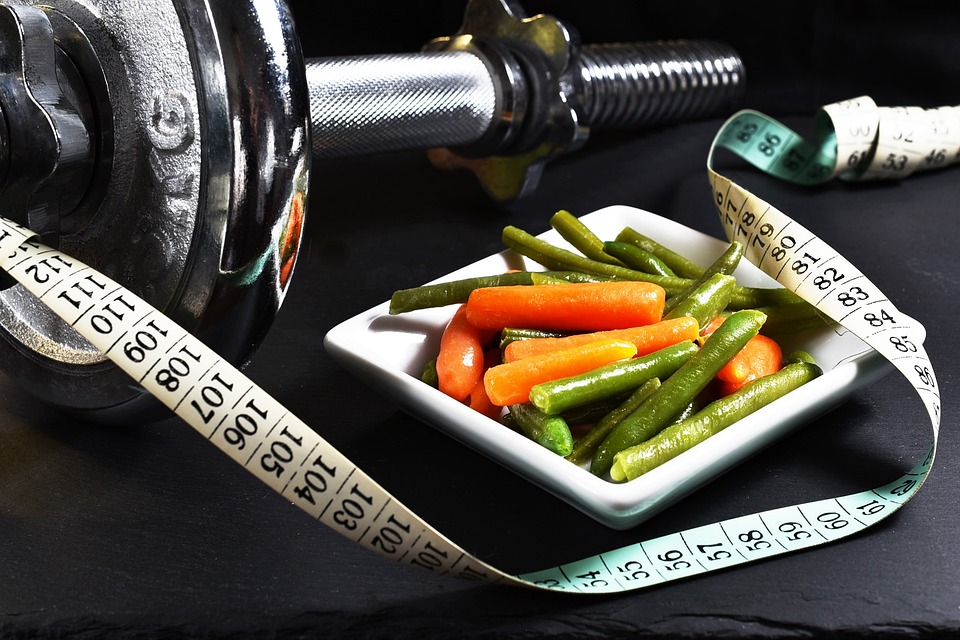Are you pondering what course of action to take when you find that your weight loss has stalled or ceased entirely? It may seem like the pounds just suddenly vanished in the beginning, but now it appears you can’t get the number on the scale to shift. This is typically known as a “weight reduction standstill” and can be a significant source of frustration for people dieting.
Overcoming a hurdle in a weight-loss journey and attaining lasting weight loss is difficult but can be accomplished. It’s a sign that you’re on the right diet plan when it’s not a challenge to stay with it from week to week—in other words, one that you like eating and that you can keep up with.
Losing weight can be boiled down to the idea of consuming fewer calories than you use, yet a range of components can influence the amount of calories you actually burn.
What is a Weight Loss Plateau?
When a person’s weight reaches a point of consistency, and the scale hardly fluctuates despite attempting to lose weight, this is referred to as a weight loss plateau.
Plateaus tend to crop up when someone is trying to slim down, especially right after they have successfully shed a lot of pounds right away. It’s important to keep in mind that other people experience the same feelings as you do, though it might not necessarily make it any less bothersome.
When you begin a program to lose weight, the initial shed may happen relatively quickly.
This can be for a number of reasons:
- You initiate multiple strategies at once: changing your diet and increasing your activity.
- Your carb and sodium intake are more controlled, and you are losing excess water weight attached to glycogen and sodium.
- You’re breaking any unhealthy habits that may have been sabotaging you in the past.
The bottom line is that weight loss does not follow a straight line. When starting a weight-loss program, it is not unusual to see your number on the scale go down initially and then to experience more fluctuation after a period of time.
How Long is Considered a Weight Loss Plateau?
Weight fluctuations are normal within the weight loss journey. A period of two weeks without any noticeable change probably is not a plateau in reality. A sustained period of 3-4 weeks is most likely indicative of a genuine weight-loss plateau.
Research indicates that reaching a weight loss standstill is usual after approximately 6 months of consuming less calories than usual; however, it can differ a lot from individual to individual.
One’s weight can fluctuate due to various reasons. First and foremost, when it comes to measuring your weight, it is important to pick a regular time, to have the same outfit on (or nothing at all), and to use an accurate scale.
The changes that your sodium, carbohydrate, and water intake make to your body weight could be caused by your body holding onto more water than usual, especially if those amounts vary from day to day.
Why Plateaus Happen
Figuring out the reasons behind a stall in progress, why it is occurring, and what can be done to address it will provide assurance that the pause is not necessarily a result of personal error.
Too Few Calories
It takes calories to burn calories. When you eat less, your body reduces its rate of burning calories. If you don’t consume enough calories or your eating pattern is unstable, your body and your metabolic rate can behave unpredictably.
The way to go about this is to consume less calories than you normally would, which will keep your metabolism functioning optimally. Bear in mind that it’s tough to maintain lean body mass if you are running a calorie deficit of more than 500 to 700.
Everybody’s caloric needs are different. The number of calories your body requires will be impacted by your gender, activity level, and overall physical condition.
Changing Portion Sizes
When you started altering your diet or plan for meals, you may have monitored the amount of each food you ate. As time has progressed have you made changes? Small modifications to the quantity of food you put in a bowl or dish on your dish may not apply pressure on your physique. However major modifications can have an effect and could possibly be more than you need.
Answer: Limiting your meal quantity too severely or creating unreasonable dietary rules can lead to uncontrolled overeating later on. Extreme shifts in food intake can also impact metabolism. Pay attention to when you’re feeling hungry and full to decide how much food to eat. Allow your body the opportunity to savor its meal and if you have a craving for more, go ahead and consume whatever you desire. By taking some time and tuning into your body, you might find it easier to determine what and how much food your body requires.
Faulty Calorie Counting
You could be keeping record of your daily consumption of calories and essential minerals with a paper diary or an app on the internet. It’s likely that if you’ve been keeping track of what you eat in your head, a few items and amounts may have slipped your mind or been inputted inaccurately.
Using a tracking app on a phone makes it easy. However, if one enjoys writing down notes with pen and paper, then it would be a good idea to have a small notebook on their person. You can also set a reminder on your phone to help you remember to log what you eat.
Too Many Calories
If you have achieved successful weight loss, it is likely that the amount of calories you are required to consume daily has decreased. As you lose weight, you need to consume less energy to keep up with your regular daily tasks.
Examine again how many calories must be consumed so that weight can be lost. Be honest and realistic about your activity level. You may be overstating the amount of calories you are burning through physical activity.
Loss of Lean Body Mass
Muscle burns more calories than fat. If you lose muscle, you’ll burn fewer calories. When the lean muscle is lost, your metabolism drops. In response, weight loss can slow down or stop.
Answer: The best way to build and preserve muscle bulk is to follow an organized strength training plan. You don’t have to become a bodybuilder, but basic exercises like push-ups and lunges can keep your body in an ideal form. Strengthening your muscles can make your day-to-day movements easier and help you burn more calories.
If you are feeling a lack of enthusiasm and vigor, it would be beneficial to visit a certified nutritionist to guarantee that you have the essential nutrients necessary for achieving your objectives.
You’ve Lost Weight
The objective may be to lose weight, but do not forget that when you are lighter, your body requires less energy to work. When you shed pounds, the number of calories your body requires for energy will be decreased.
The answer is: Taking into account beginning a weight lifting routine to assist in growing your muscle-to-fat ratio. Building muscle mass will raise the amount of calories your body burns and also keep your body strong. You should not reduce your calorie intake any further, so you should engage in more physical activity instead. A healthy, well-nourished body will be able to handle more strenuous or regular exercise.
Your Body Adapted
When beginning a fresh workout regimen, your body will start to evolve. At this point, your muscles are regenerating themselves—a process that demands energy. As you do something more, you will become better and better at it. As your body adapts to the exercises included in your workout, it will burn fewer calories to get through them.
Eventually, your body will stop adapting to increased workloads. If you don’t switch up what you’re doing, you will get fewer calorie-burning benefits from activity.
Answer: The secret lies in not allowing your body to adjust to the workout routine you have started. Keep your body used to exercise by varying the strength, length, how often, and/or the type of activity. You may want to include interval training as well.
Not Enough Exercise
Do you counterbalance the exercise you do by spending the rest of the day sitting at your work station or reclining on the sofa? If you spend most of your day being inactive, you will not reap the advantages of physical activity.
The answer is to increase the amount of non-exercise activity that results in the burning of calories by adding more physical activities to your daily routine. Rise to your feet and use your computer; opt for the stairs over the elevator, or complete simple home chores while you view television. Walking the pooch and doing some gardening are also terrific methods of increasing your Non-Exercise Activity Thermogenesis.
Not Enough Protein
Studies have indicated that an appropriate intake of protein can assist in regulating some of the changes in metabolism which occur when you reduce your body weight. Investigators believe that protein functions to keep our existing muscles healthy and help grow new muscle tissue.
Solution: Evaluate the nutrient balance of your current diet. Be sure you are consuming enough protein to construct the muscle the body needs for a healthy metabolic rate.
Exercising Too Much
When you do too much exercise, you can reach a stage in which a growth in the amount of energy you use to exercise is canceled out by a decrease in the energy you use for activities other than exercise. To put it differently, when you push yourself physically to a greater level when exercising, your body compensates for this by burning fewer calories for the remainder of the day.
Solution: Take time to recover. Burnout in regards to working out is a signal that is telling you that you need some time off; nevertheless, you do not need to be completely inactive. Try something gentle like yoga or a stretching routine.
After an appropriate period of rest, begin exercising lightly and only work up to a more intense level if needed.
5 Ways to Beat a Weight Loss Plateau
Do you feel like you have exhausted all your options and cannot think of anything else? Possibly, there might be no shift in the amount on the scale or your performance and energy levels could be decreasing. If you have looked again at your objectives, dietary decisions, and reasons, and they appear to be appropriate, then here are some activities you can attempt to move beyond a weight loss impasse.
1. Reverse Dieting
Reverse dieting can be beneficial if you have been strictly controlling your calorie intake for a long period of time and feel it is time to stop depriving yourself. Reverse dieting requires you to gradually raise your daily calorie consumption to help keep your current weight, as well as to raise your metabolic rate. It is essential to make sure to increase your caloric intake slowly in order to avoid any unnecessary weight gain.
Reverse dieting can not only boost your metabolism, but it can also decrease feelings of hunger and tiredness, giving you additional energy to take on your daily tasks. Investigations on reverse dieting haven’t been very thorough yet, so you have to choose whether it’s a suitable solution or something that you want to experiment with.
2. Change Your Macro Split
Figuring out the ideal nutritional balance of macros can be a challenge, especially if you are new to monitoring them. It is important to determine which methods work best for you, although you may need to alter your approach as time goes on. Given that our habits, physical make-up, metabolism, etc., are in a constant state of flux, this explains the need for alteration.
Experimenting with carbohydrate cycling can be a useful method to liven up your macronutrient split while assisting with your health objectives too. Varying your carbohydrate intake based on your physical activity level and fitness objectives is what is known as carbohydrate cycling. Much research must be conducted to ascertain how successful carbohydrate cycling is for fat loss, yet it has proved a helpful instrument for certain people.
If you’re having difficulty losing weight, having difficulty getting through your physical activities, or have an issue with regulating the amount of carbs you consume, you may want to consider carb cycling.
3. Mix Up Your Fitness Routine
If you:
- Struggle to find consistency with an exercise routine.
- Coast through your workouts without breaking a sweat.
- Find yourself dreading every workout or lacking the energy.
It’s time to rethink your fitness routine.
Varying your exercise program can invigorate your metabolism and muscles in new ways, making your weight loss journey more efficient.
Search for an activity that you find enjoyable that you anticipate engaging in. Going for a stroll or trail with a companion, utilizing a fresh out of the plastic new online wellness stage, or enlisting for dance exercises are potential alternatives. Mixing it up with your regular routine is an excellent way to remain enthusiastic and to make exercising enjoyable and advantageous.
4. Adopt Stress Management Techniques
If you’re taking good care with what you eat and exercising regularly, but your stress levels are still too high, you might unintentionally be preventing yourself from achieving your goals for weight loss.
Tension can influence hormones and rest, which in turn will have an effect on your metabolic rate, dietary intake, and physical activity.
Discovering ways to cope with the stressors in your life is an essential aspect of wellbeing and losing weight. Going for a short walk in nature, pausing to meditate, focusing on being in the present moment, or calling someone close to you are great ways to start lowering your stress level.
5. Get Better Sleep
Creating and maintaining a regular sleeping pattern is essential for good nutrition, physical fitness, and general wellbeing. Establishing a sleeping ritual can be helpful in achieving consistency. There are certain practices that have been proven to positively impact sleep, including:
- Creating a bedtime ritual.
- Avoiding screens and blue-light at least two hours before bedtime.
- Sleeping in a cool dark environment.
When it comes to eating, it’s important to make sure that you’re not indulging too close to bedtime and also not going to bed on an empty stomach, as this can make it more challenging to both fall and stay asleep.







